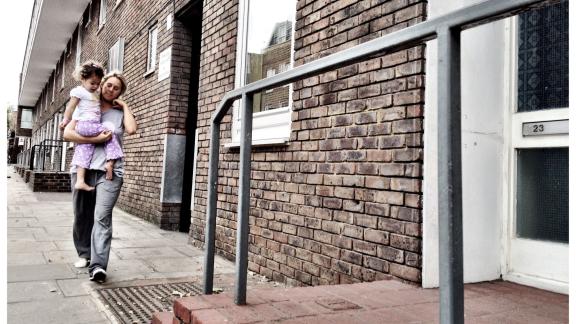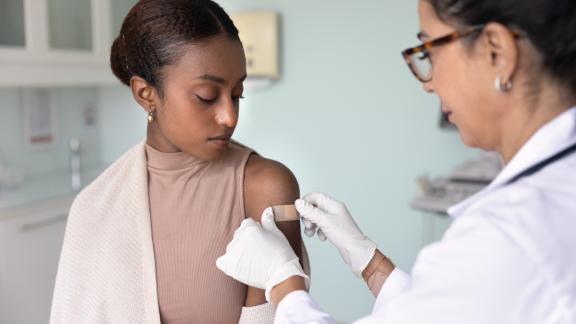Fears for children and young people’s development as community health services waiting list tops a million for first time

The mental well-being and social development of high numbers of children and young people is being put on hold, as under resourced community health services experience record delays for care.
That’s according to leaders of community health services providing paediatrics, health visiting and speech and language therapy who fear for the futures of young people experiencing very long waits. These leaders are now demanding urgent cross-government action to finally get to grips with a hidden but ever-growing crisis.
Backlogs have now reached more than one million in community health services, an increase of 10% since October 2022. And a disproportionate number, more than one in five of those waiting, are children. Health leaders say that the potential consequences for all these patients – and particularly children – need as much attention as hospital-based care.
The latest data from NHS England shows that the longest waits in community services are for children and young people’s community paediatric services, with nearly 14,000 waiting for over a year to be seen, and another 34,000 waiting over 18 weeks. These are vital services that diagnose and manage the needs of children with complex care needs, including autism and developmental delays. Long waits can be incredibly distressing and damaging for these children and their families.
Together with support from education and social care, community health services are critical in enabling children and young people to live well and to develop and fulfil their potential. They also provide essential services throughout a person’s adult life, including district nursing, sexual health services, podiatry and end of life care.
More broadly, community health services play a key role in the health and care system, helping to keep people well at home, in community settings closer to home and supporting people to live independently. They deliver around 100 million contacts with patients each year, account for nearly a fifth of the NHS’s workforce, with a budget of around £10bn.
Between October 2022 and August 2023, figures show that the there was a 7% increase in the number of children and young people on the community services waiting list, and now more children than adults are waiting over a year for care.
Most patients on the community waiting list are seen relatively quickly with two thirds of those currently on the overall list waiting up to three months. 72% of adults on the list have currently been waiting for up to three months, but children’s services are clearly struggling with capacity, with only 45% of children waiting for the same time. 40% of children have been waiting for over 18 weeks, in comparison with just 15% of adults.
While there has been some progress in reducing waits in some specific children’s services between October 2022 and August 2023, such as speech and language, occupational therapy and support for long term conditions, other services have experienced significant growth to their lists. Vision screening (64.7% increase), orthotics services (55.2%) and community paediatric services (40.1%) have all experienced higher increases than any adult service.
Matthew Taylor, chief executive of the NHS Confederation said: “We know that long waits can often impact outcomes for children more severely than adults because delays in assessment and treatment have a knock-on effect on communication skills, social development and educational outcomes as well as their mental wellbeing. So, the longer children are kept waiting, the more it will affect their development, and we know that vulnerable communities are impacted disproportionately.
“We have a real and growing problem with long waits in community services, but despite repeated warnings that neglect of these vital services is having a detrimental impact on patients, these warnings seem to be met with a shoulder shrug from government. Leaders are working incredibly hard to deliver these important services for patients but are fighting a rising tide and need help.
“The Community Network’s survey from earlier in the year found that in some areas waits for care are now so long that a 12-year-old experiencing issues might not receive treatment until they are 16. No one should be waiting that long.
“The government must take meaningful action, with the Autumn Statement an ideal time to grasp the nettle, and leaders want to see investment in prevention and early intervention, along with more national funding similar to the Elective Recovery Fund to help get back on track.
“There is an ever-growing consensus, along with a strong economic case, that we need to achieve the NHS’s long-term aim of improving prevention and shifting care away from hospitals and back into the community, where patients want to be treated. A significant step towards doing that would be enabling under-resourced community services to bring down the number of patients waiting for care, particularly children and young people.”
In August 2023 the services with the very longest waits – over a year – were community paediatrics (13,859 people waiting), adult podiatry (5,753), and children and young people’s therapy interventions (3,458).
Sir Julian Hartley, chief executive, NHS Providers, said: “Too many children and young people risk falling through gaps, particularly after the pandemic. Delays in diagnosis, treatment and care can significantly affect their mental and physical health and wellbeing. Getting help and support to children and young people in need as early as possible is vital for their future life chances and to tackle inequalities.
“Community services are working flat out to see more people more quickly and making great progress in many areas but demand for children and young people’s services is still stubbornly high - making it really hard for providers to turn the tide amid staffing shortages and without further support.
“Without more cross-government support and focus lots of youngsters, their families and carers will continue to be hit by long waits for the treatment and support they need.”
In the spring, the Community Network, hosted by NHS Providers and NHS Confederation surveyed 65 community provider leaders. The survey found:
- All respondents (100%) were either moderately (23%) or extremely (77%) concerned about the impact of long waits for community children and young people's services.
- Almost three quarters (72%) of respondents were extremely concerned about the impact of long waits for community children and young people's services on staff morale.
- Almost nine in 10 respondents (88%) reported that current waiting times for children and young people to access initial assessment and treatment for community services have increased either significantly (48%) or moderately (39%) compared to pre-pandemic figures.
About us
We are the membership organisation that brings together, supports and speaks for the whole healthcare system in England, Wales and Northern Ireland. The members we represent employ 1.5 million staff, care for more than 1 million patients a day and control £150 billion of public expenditure. We promote collaboration and partnership working as the key to improving population health, delivering high-quality care and reducing health inequalities.



